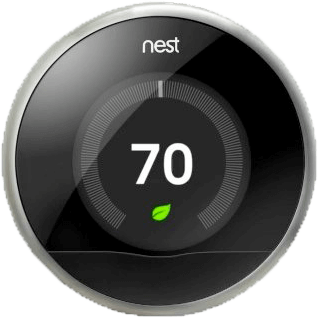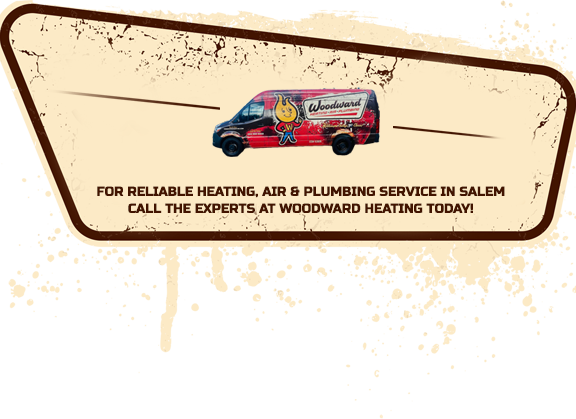
Any long-time homeowner will tell you that many different things can affect your household heating and cooling. There are certain upkeep tasks that you must stay on top of, such as scheduling regular HVAC maintenance and swapping out dirty air filters. You also have to be proactive about getting your heating and cooling appliances the needed repairs whenever issues arise. However, even an experienced, proactive homeowner may not realize that the placement of their thermostat makes a significant difference in their home comfort. In fact, having your thermostat set up in the wrong spot can even lead to wasted energy and increased wear and tear on your heating and cooling systems. So, where is the right place to put your thermostat?
Why Thermostat Placement Is Important
Thermostat placement always matters, but it’s particularly crucial if you have a modern “smart” thermostat. These thermostats take most of the manual effort out of controlling your home’s climate, but that convenience comes at a slight cost. If you don’t set it up in an appropriate part of our household, it’s going to have a direct impact on your comfort and the status of your HVAC appliances.
Modern thermostats work by measuring the nearby temperature and then communicating a signal to your heating and cooling systems. Once the appliances receive the message, they’ll automatically circulate cool or warm air as necessary to bring your home to the ideal temperature. However, if your thermostat isn’t in a place where it can obtain an accurate sample of your home’s temperature, then the information it feeds to your HVAC system will be incorrect. That’s called a “ghost reading,” and when it happens, it can cause your furnace or air conditioner to operate needlessly. For example, if your thermostat thinks that your home is hotter than it actually is, it will communicate to your AC unit that it needs to cool the place down. However, since your home isn’t as warm as it thinks, it will probably end up being colder than you like once the air conditioner starts running.
So, the key to effective thermostat placement is to find somewhere that accurately represents your home’s climate. Otherwise, you’re likely to end up with inconsistent comfort and overworked heating and cooling appliances.
Where Are the Best Spots for Your Thermostat?
There are a handful of general guidelines for finding an ideal thermostat location. Most importantly, you want to find somewhere in your home with as few temperature fluctuations as possible. The spot should always be on an interior wall, and the thermostat should be placed somewhere between 50 and 62 inches from the ground. Heat rises and cold air sinks, so anywhere above or below that range will almost certainly lead to regular ghost readings.
Near the Center of Your Living Space
Usually, finding a place near the middle of your home is a good choice for thermostat placement. This is because in most cases, the center part of your house will feature a temperature that’s close to your home’s average climate. That means that by placing your thermostat there, you’ll be giving yourself the best chance of keeping an even, consistent climate. It’s uncommon for the center of a home to experience too many extreme temperatures, and it’s typically an area that’s easily accessible by everyone in the household.
In a Room with No Windows
If possible, you should choose a room without any windows for your thermostat location. Glass simply isn’t as effective at keeping hot or cold air out as walls, and rooms that contain windows tend to experience more inconsistent temperatures than rooms that don’t. On a hot summer day in Salem, OR, your rooms with windows will probably be much warmer than the rest of your home. And, on a chilly, drafty day, those rooms will likely be significantly colder. Either way, your thermostat won’t be experiencing temperatures that are indicative of the home as a whole.
In Your Favorite Part of the Home
If you spend most of your time in one room, you may not be as concerned about keeping the overall household temperature consistent. For example, if you tend to hang out exclusively in the living room, what’s most important is that your living room remains comfortable. So, if your thermostat is located wherever you spend the most time, the instructions it sends to your HVAC system will always be based on the temperature of that area. If your favorite part of the home happens to feature no windows and be near the center of your home, then you’ve found the perfect spot for your thermostat!
Where Are the Worst Spots for Your Thermostat?
Most importantly, you need to find a place for your thermostat that doesn’t typically see abnormally high or low temperatures. When choosing a wall spot, you should also try to find somewhere that doesn’t have plumbing pipes or supply ducts. Oftentimes, water and air moving behind the wall can radiate hot or cold temperatures and affect the thermostat’s readings. To minimize ghost readings, all of the following locations should be avoided when deciding where to place your thermostat.
Anywhere Exposed to Direct Sunlight
Any time that direct sunlight hits your thermostat, it’s going to result in high ghost readings. Just like that, your AC unit will be working unnecessarily, and your home will probably be uncomfortably cold. If you set up your thermostat at night or on a cloudy day, make sure you’re considering whether or not you’re choosing a spot that may later be exposed to the sun’s rays.
Above or Below an Air Vent
Whenever your heating or cooling system circulates air, it’s going to come flowing out of your air vents. If your thermostat happens to be above or below one of those vents, the regular bursts of hot and cold air are going to really mess with its readings. You can probably get away with placing the thermostat a few feet to either side of a vent, but it’s best to give them as much space as possible to avoid ghost readings.
In the Kitchen
Unless you typically don’t utilize your oven or stove, you should avoid placing your thermostat in your kitchen. Whenever those cooking appliances are being used, your kitchen is going to be one of the warmest parts of your household. Putting your thermostat there will likely lead to your AC unit running far more often than necessary and your home being consistently chilly.
Since 1989, we at Woodward Heating Air Plumbing have been a trusted provider of heating and cooling services for the greater Salem area. In addition to our quality heating and air conditioning work, our expert team is available to assist you with fireplace, indoor air quality, and gas piping services as well. Over the years, we’ve developed a reputation for our honest, straightforward approach, and we offer our customers upfront pricing for all of our services. We also offer great promotional pricing and a number of deals that can help save you money. If you’re ready to make an appointment with our friendly team, just give us a call today at Woodward Heating Air Plumbing!





